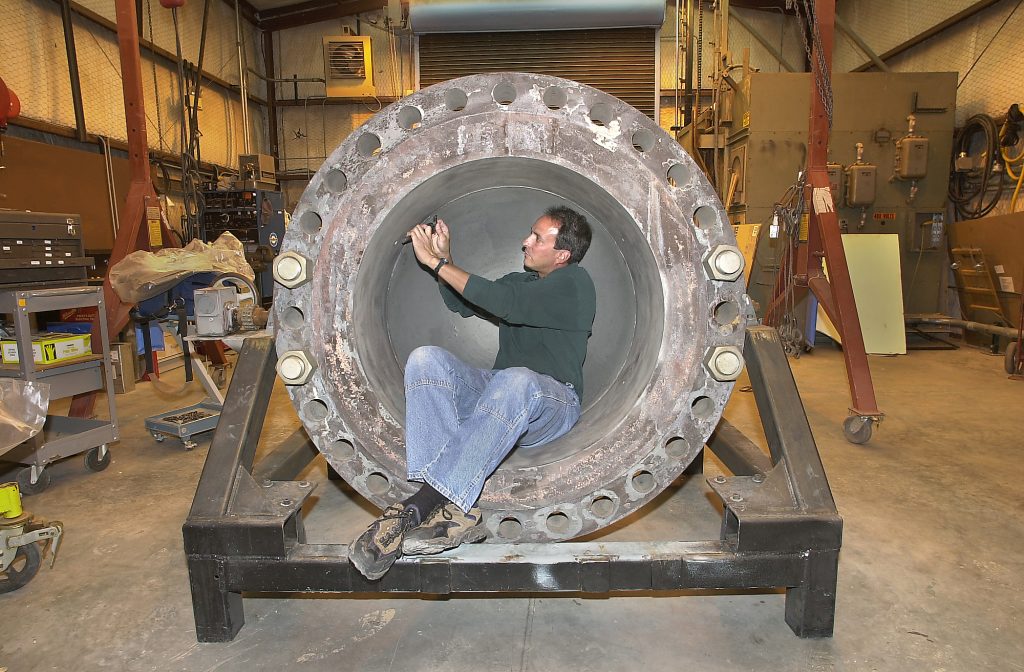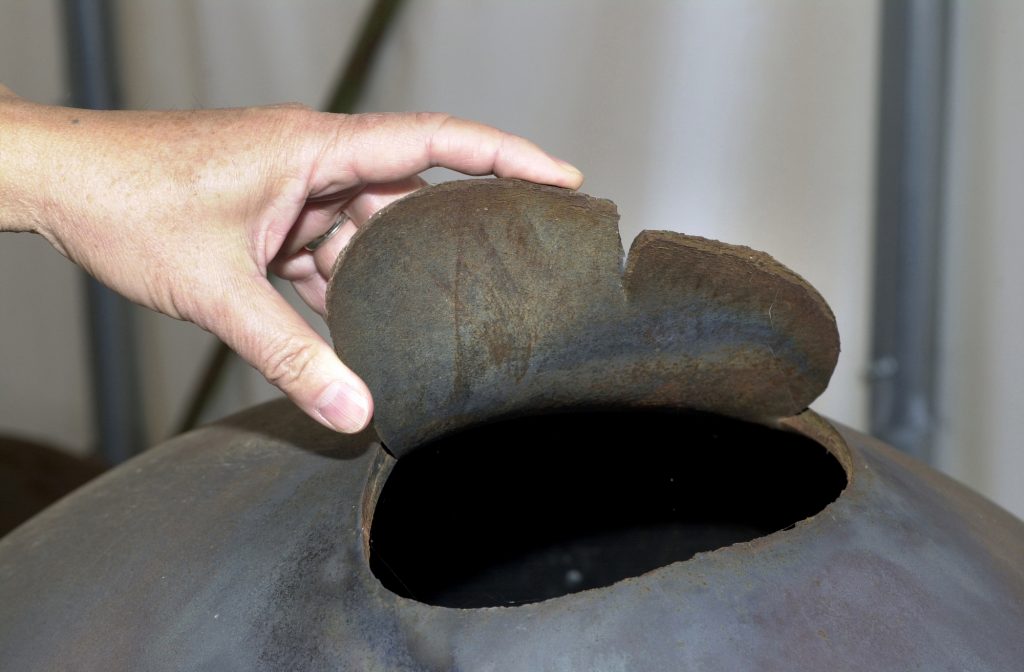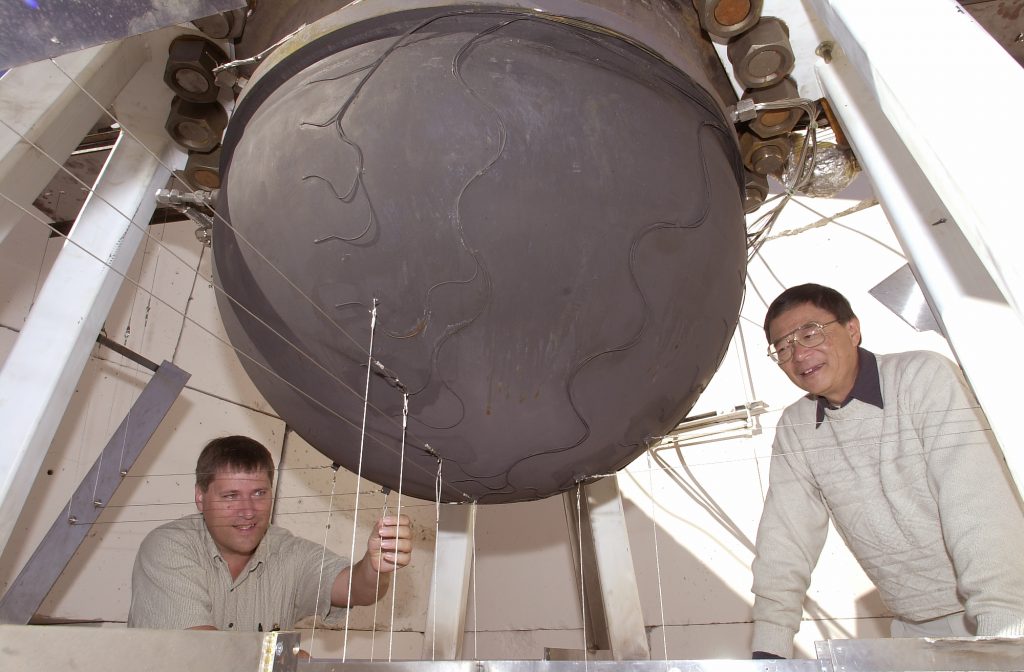
Download 300dpi JPEG image, ‘InsideNC.jpg’, 1.5MB (Media are welcome to download/publish these image with related news stories.)
ALBUQUERQUE, N.M. — In the unlikely event of a severe nuclear power plant accident such as a reactor core meltdown, the steel pressure vessel that holds the uranium rods at the heart of a nuclear plant is designed to withstand extremely high internal pressures and temperatures so that the radiation hazards can’t get out.
Now, in a series of high-temperature/high-pressure tests on scale models of steel pressure vessels, researchers at the Department of Energy’s Sandia National Laboratories are helping an international organization interested in nuclear safety better understand the materials properties and structural factors at work in severe nuclear reactor accidents.
They hope the tests will lead to improved predictive computer models so operators of nuclear plants will have better information when they take measures to allay an accident, and so designers of future plants can factor in the best safety features available.

Download 300dpi JPEG image, ‘CloseUpNC.jpg’, 1.3MB
On Monday, Oct. 23, Sandia test engineers will pressurize a 1/5-scale model of a pressure vessel’s lower-head assembly (the inverted steel dome that would hold the damaged uranium core in a meltdown) to about 700 psi, then increase the temperature until the assembly pops.
During this “test to failure,” expected to last about four hours, the steel on the inside of the vessel will turn red-hot and begin to deform as it is heated to temperatures exceeding 1,500 Kelvin (2,240 degrees Fahrenheit). At these temperatures and pressures, the dome will expand like a balloon until the steel tears and energetically releases its internal pressure.
The researchers will monitor the steel’s reaction to the heat and pressure using more than 100 sensors. After the test they’ll compare the test data to the materials response predicted by the nuclear power industry’s analytical models.

Download 300dpi JPEG image, ‘OutsideNC.jpg’, 1.5MB
Next week’s test is the second in a series of five Sandia tests being sponsored by the Organization for Economic Cooperation and Development (OECD), with eight countries providing funding — Germany, France, the Czech Republic, Belgium, Spain, Sweden, Finland, and the U.S. The U.S. funding is provided by the Nuclear Regulatory Commission and Department of Energy.
Each test puts a 1/5-scale-model lower-head assembly through a different temperature and pressure history that is representative of the conditions a vessel might experience in a distinct type of accident or accident response scenario.
The OECD tests follow an initial series of eight heat-pressure tests on steel pressure vessels conducted from 1990 to 1998 by Sandia for the NRC. For more information about Sandia’s nuclear energy work, see http://www.sandia.gov/E&E/ne.html.
| Results of test (updated Oct. 24, 2000): Sandia National Laboratories test engineers began heating the 1/5-scale-model lower-head assembly at 2 p.m. Monday, Oct. 23, until the assembly reached 800K (approximately 980 degrees Fahrenheit). They then pressurized the vessel to about 770 psi (corresponding to an actual reactor cooling system, or RCS, pressure of about 290 psi) and resumed heating.At about 5 p.m., when temperatures on the inner surface of the vessel reached 1300 K (1880°F) and the outer-surface temperature was about 1000 K, the vessel began to deform, stretching like a balloon. Just before the vessel failed at about 6 p.m., with an internal temperature exceeding 1800 K (2780°F), the deformation accelerated.There was a loud bang when the vessel ruptured. Pieces of the graphite heater assembly were blown out through the rupture, and some pieces were found more than 10 meters away. An initial inspection of the vessel determined that the rupture is located near the bottom center of the assembly and that the total deformation at the vessel bottom is about 11 cm.Detailed final results of the test will be reported to the OECD.“These tests are very impressive to watch,” said Sandia test engineer Larry Humphries after the test. “The strength of the steel even under these conditions is remarkable. As the assembly reached higher temperatures, the outer surface of the vessel began to emit a red glow, which was quite dramatic as sunset approached.” |